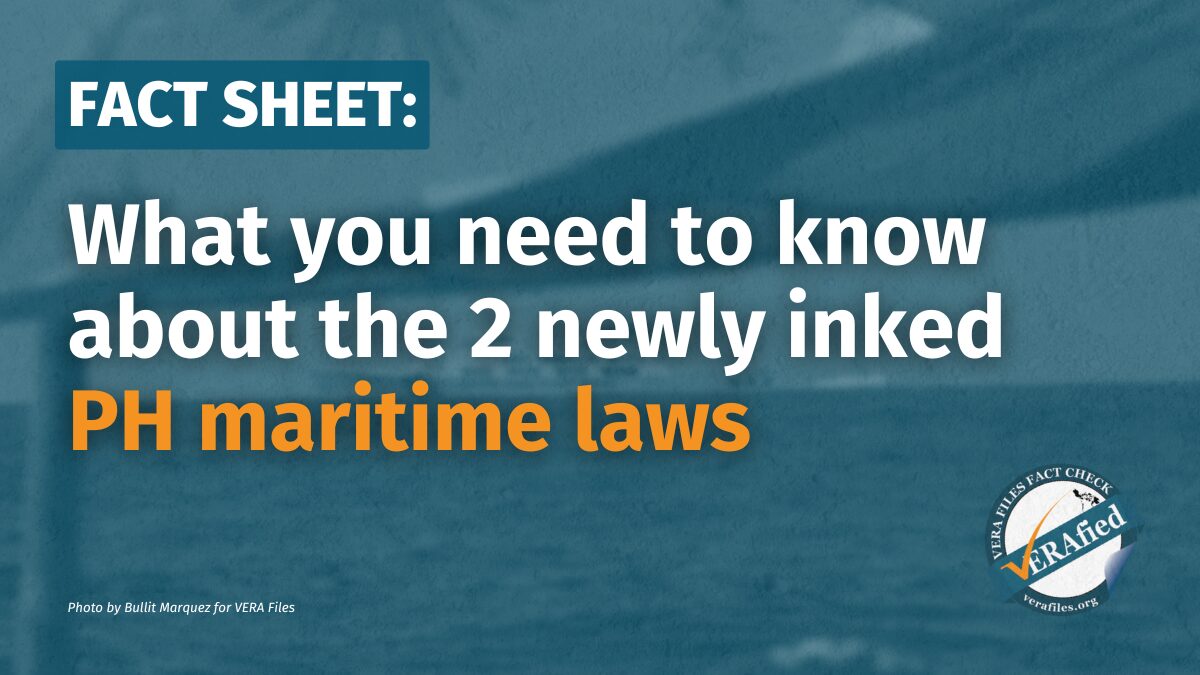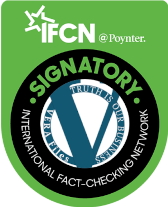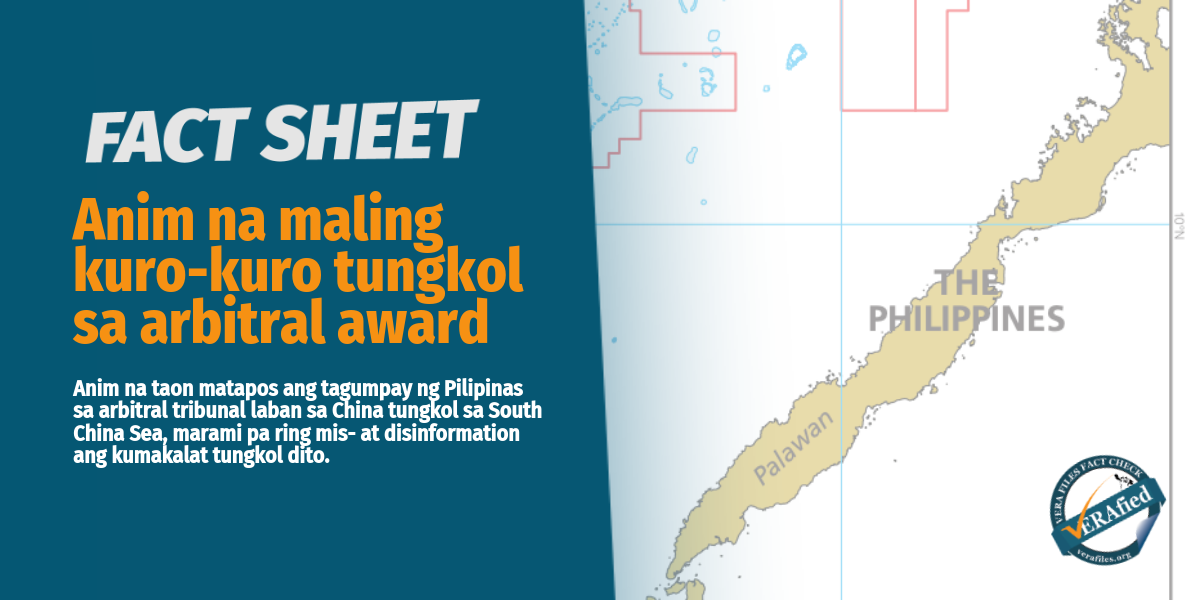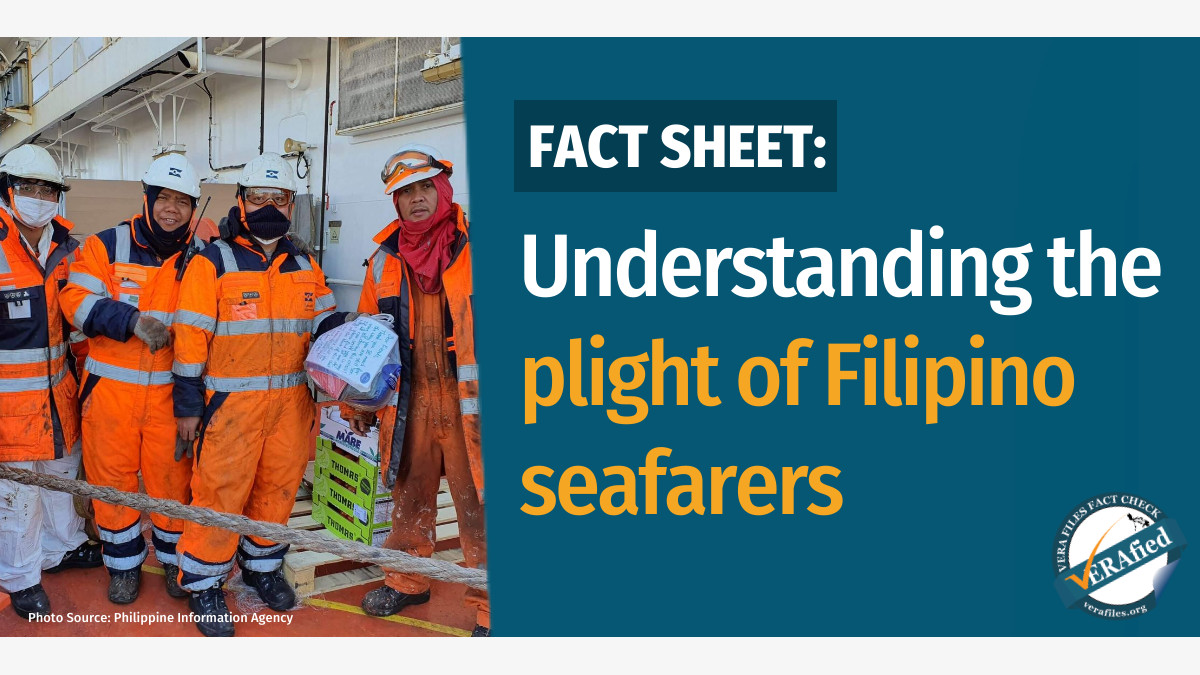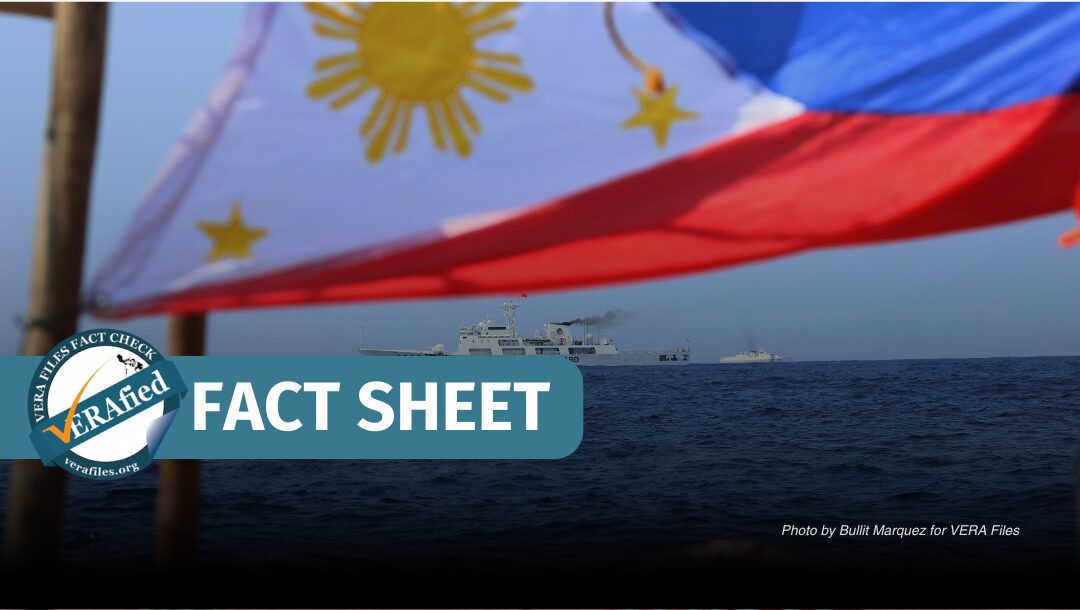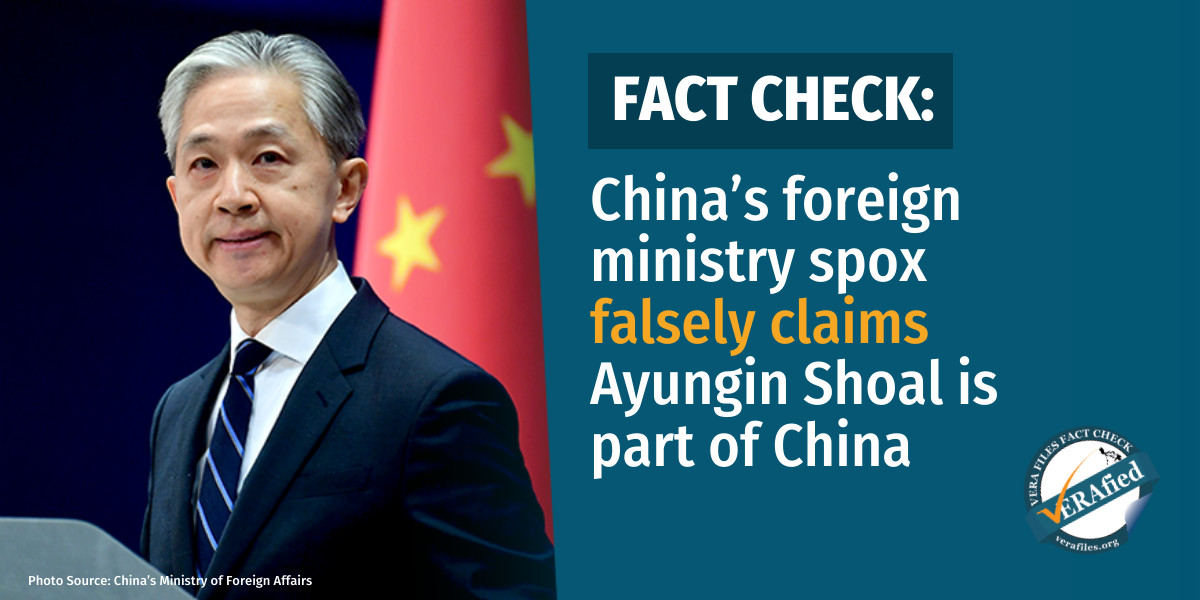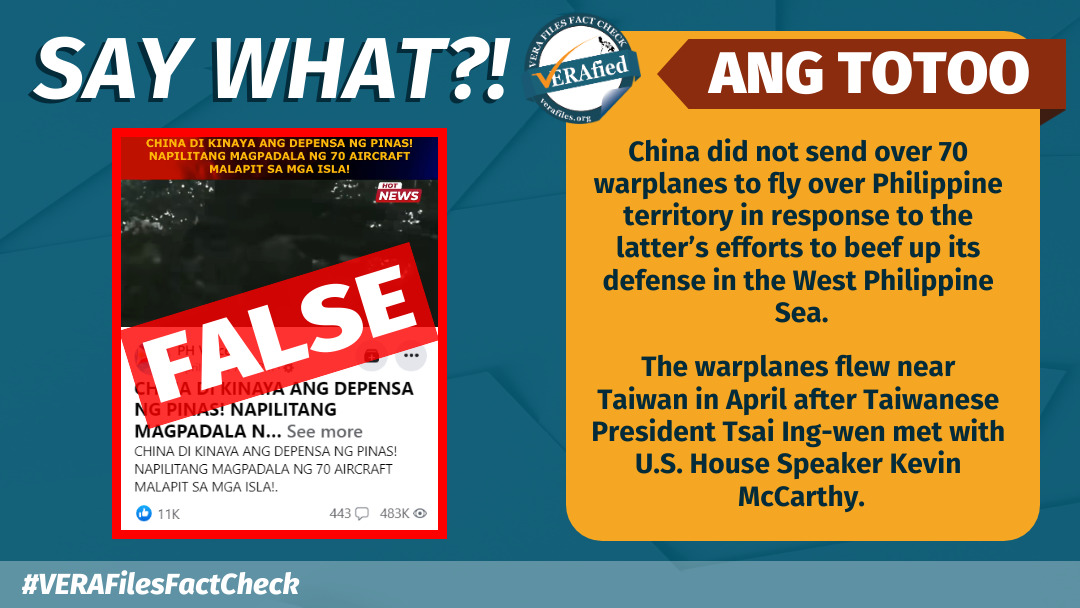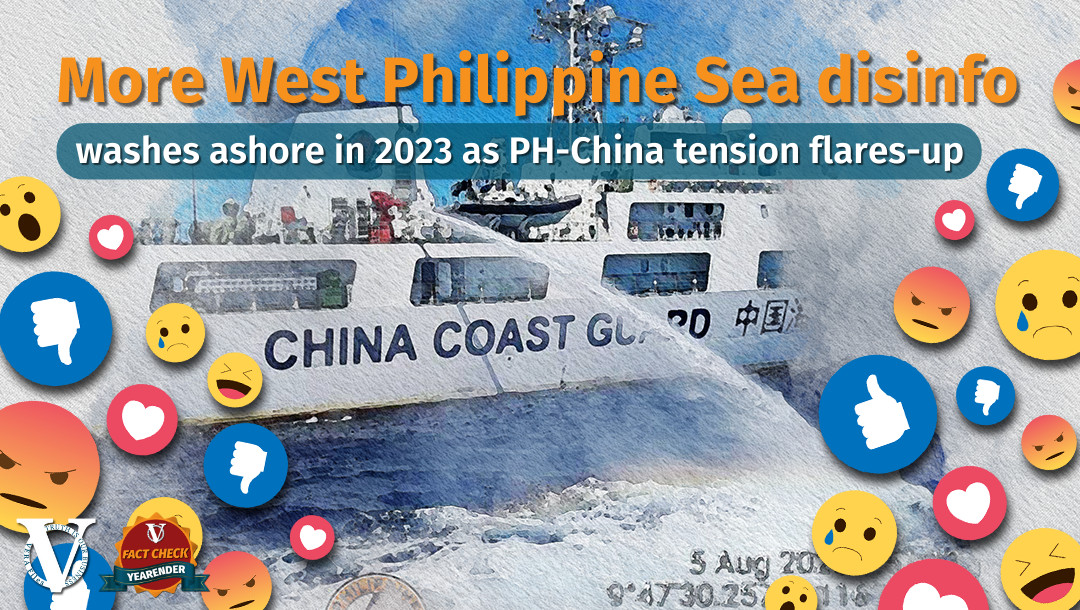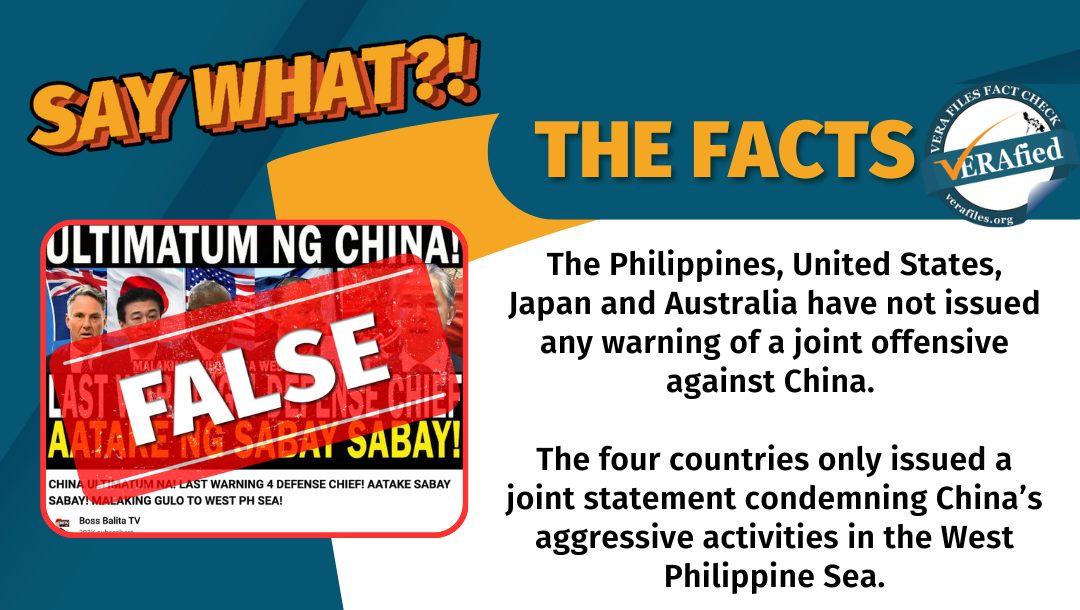Amid rising tensions with China in the West Philippine Sea, President Ferdinand Marcos Jr. signed on Nov. 8 the Philippine Maritime Zones Act and the Philippine Archipelagic Sea Lanes Act. The twin laws assert the country’s maritime entitlements over the disputed areas in the South China Sea.
See First ever trilateral maritime exercise
How crucial is the passage of these two landmark laws? Here are four things you need to know:
1. What are the Philippine Maritime Zones Act and the Philippine Archipelagic Sea Lanes Act?
The Philippine Maritime Zones Act or Republic Act (RA) 12064 “clearly delineates” the metes and bounds of the country’s maritime zones based on the Constitution and the standards set by the United Nations Convention on the Law of the Sea (UNCLOS).
This includes the extent of the country’s internal waters, archipelagic waters, territorial sea, contiguous zone, exclusive economic zone (EEZ) and continental shelf. The law provides “a firm legal basis” for social, economic, commercial and other activities conducted within the Philippines’ maritime zones.
RA 12065, or the Philippine Archipelagic Sea Lanes Act, complements RA 12064 and enhances national security by establishing specific archipelagic sea lanes and air routes where foreign ships and aircraft are allowed to pass.
The three sea lanes and air routes above them are defined by connecting the following:
- Philippine Sea–Balintang Channel–West Philippine Sea
- Celebes Sea–Sibutu Passage–Sulu Sea–Cuyo East Pass–Mindoro Strait–West Philippine Sea
- Celebes Sea–Basilan Strait–Sulu Sea–Nasubata Channel–Balabac Strait–West Philippine Sea.
2. Why are these new laws important?
“(Approval of these laws) really clarifies the limits of our entitlements as [to] where we can apply our sovereignty, sovereign rights and jurisdiction. And certainly, it’s a reaffirmation of UNCLOS and the 2016 arbitral award,” explained Foreign Affairs Assistant Secretary Marshall Louis Alferez in a press briefing in Malacañang on Nov. 8.
The 2016 arbitral award essentially invalidates China’s expansive claim in the South China Sea and rules that the Philippines has exclusive sovereign rights over the West Philippine Sea.
Alferez stressed that these twin laws are important in the country’s legal framework, especially in terms of maritime security and economic development.
Senior State Counsel Fretti Ganchoon said in the same press briefing that some of the existing maritime laws in the Philippines are “fragmented,” “not integrated” and “outdated.”
“So, the primary objective, I think, of this [Maritime Zones Law] is to make sure that all of our existing laws related to maritime zones are updated and are consistent with UNCLOS, and this will also guide all our agencies when they perform their functions in the West Philippines Sea,” Ganchoon added.
Sen. Francis Tolentino said the passage of both laws, especially RA 12065, would also greatly benefit the local fisherfolk community.
“Alam na nila kung saan dadaan iyong malalaking mga barko. Hindi na mauulit iyong nangyayari dati sa Zambales [na] iyong mga bangka nating maliliit nababangga ng malalaking barko… kasi iyong malalaking barko doon na lang dadaan sa archipelagic sea lanes,” the senator, who is principal author of RA 12064, explained in the Malacañang briefing.
(They will already know where the big ships pass through. This will prevent incidents like what happened in Zambales where fishing boats were rammed by bigger ships because these ships can now only pass through the archipelagic sea lanes.)
3. How will the twin maritime laws be implemented?
Once the Maritime Zones Law takes effect 15 days after the President signed it, the government must send it to the Secretariat of UNCLOS and the United Nations (UN) General Assembly for their imprimatur.
The Sea Lanes Act, however, requires approval from the International Maritime Organization (IMO) after it takes effect. The IMO is a specialized UN agency that sets the standards “for the safety and security of shipping and the prevention of marine and atmospheric pollution by ships.”
Tolentino said the approval period for IMO is six months. Once approved, the organization will notify all vessels around the globe that there are only three sea lanes through which they can exercise commercial passage within Philippine archipelagic waters.
The National Maritime Council (NMC) is the lead agency to implement the twin laws and “provide for a coherent, cohesive approach in any maritime concerns.” The Philippine Coast Guard is tasked to enforce the Sea Lanes Act.
Retired vice admiral Alexander Lopez, spokesperson of the NMC, said in an interview on One News that with the government’s current capabilities, “we’ll be able to detect [foreign vessels], monitor and identify them and if there are violations, we have enough to interdict them.”
The National Mapping and Resource Information Authority (NAMRIA) will be the “technical arm” of the team tasked to come up with an updated Philippine map based on the new laws.
“We already prepared the delineation of maritime zones and archipelagic sea lanes. We are just awaiting and anticipating the issuance of the IRR, the Implementing Rules and Regulations, for us to fine-tune the same and to finally publish the map,” NAMRIA Administrator Peter Tiangco said in the Malacanang press briefing.
4. How will these new laws impact disputes in the South China Sea?
Two days after Marcos signed the Philippines’ new maritime laws, the Chinese government expressed its opposition by declaring “baselines” of the territorial sea adjacent to Scarborough Shoal— a move to supposedly strengthen its claim over the South China Sea feature.
Scarborough Shoal, also known as Panatag Shoal or Bajo de Masinloc, is located 124 nautical miles off Zambales and within the EEZ of the Philippines, over which the country exercises its sovereign rights.
The Philippine government has since then issued a diplomatic protest to counter China’s move.
“We don’t expect an instant recognition on the part of China because they have been disregarding international law,” Tolentino noted.
Ganchoon pointed out that non-recognition of other countries will not stop the Philippines from enacting its own laws.
“[T]he effectivity of your law does not depend on the recognition of other states. So now that we have this law… this would help our law enforcement agencies in the enforcement of our pertinent maritime laws in our maritime zones,” she explained.
Lopez, on the other hand, said that China was expected to oppose the new laws.
“Even without the two laws passed, nagre-react naman sila, eh, (they are reacting) because they believe the area is theirs. But again we are anchoring our sovereign rights and jurisdiction on UNCLOS and the 2016 arbitral ruling,” he said.
“So, we just enacted this law para talaga ma-define (so we can define)… para maging basis na rin para mag-draw tayo ng (and make it as the basis for when we draw) the most updated maps of the Philippines,” he added.
Tolentino said tensions in the South China Sea, particularly in the Philippines’ EEZ will not be instantly diluted. However, the senator added, “the recognition, the imprimatur that we will be getting from the international community would strengthen our position.”
